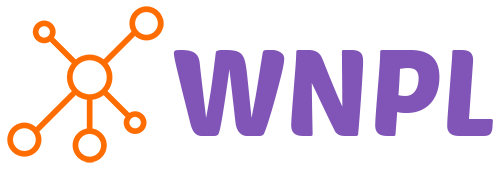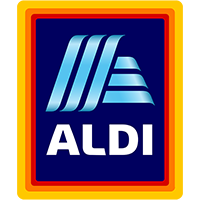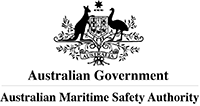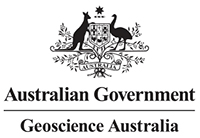1. Executive summary
Multi-agent orchestration refers to the design and deployment of AI systems where multiple autonomous agents coordinate to achieve complex goals. These agents may operate in parallel, share data, divide responsibilities, and handle exceptions — without relying on human oversight for every step.
WNPL helps organisations go beyond one-off automation and instead build agent networks that cooperate, reason, and act — all aligned with your operations and business logic.
Outcomes:
- Coordinate large-scale, cross-functional workflows
- Automate decision chains across tools and teams
- Respond dynamically to changing inputs or environments
- Reduce operational blind spots through distributed autonomy
2. What this page covers
This page outlines:
- What multi-agent orchestration is and why it’s different from single-agent setups
- Where multi-agent systems are most impactful
- WNPL’s orchestration framework and design approach
- Use cases across industries and departments
- Our delivery model
- Next steps to evaluate your readiness or scope a build
Target audience:
- CIOs, Heads of Operations, and Enterprise Architects
- Leaders of complex, distributed, or multi-location teams
- Digital transformation teams ready to move beyond pilot AI systems
3. WNPL service scope
WNPL’s orchestration offering includes the planning, development, and deployment of coordinated agent ecosystems — where multiple agents can interact, learn from one another, and work across applications.
Our core services:
- Multi-agent system architecture
- Agent orchestration design
- Intelligent collaboration systems
Engagement models:
- Standalone orchestration layer on top of existing agents
- Greenfield multi-agent network for new workflows
- Upgrade path from single-agent to agent team orchestration
✅ Quick Tip: If your workflows already touch 3+ tools or involve escalation paths, you’re already a candidate for orchestration — even if you don’t call it that yet.
4. When orchestration matters
Orchestration becomes valuable when the complexity of your operations exceeds the control of any single automation agent.
Scenarios that demand orchestration:
- Tasks are distributed across departments or geographies
- Workflows require conditional branching, hand-offs, or role-based actions
- Agents must “wait” for other events or processes to complete
- Shared memory, task queues, or status awareness is needed
Real World Example
A logistics company deployed 5 agents: one for inventory, one for vehicle scheduling, one for traffic monitoring, one for escalation, and one for reporting. An orchestration layer that was designed to allow these agents to communicate, trigger each other, and update a shared status hub — reduced manual coordination effort by 60% and improving response time by 2.3x.
5. Coordinated systems in real business
Examples of real-world agent orchestration:
- Retail: A pricing agent triggers a promotion agent → syncs with an inventory agent → informs the email marketing agent
- Compliance: A data flag agent escalates to a validation agent → logs a report → notifies a human reviewer only if thresholds are breached
- Logistics: A delay-detection agent triggers rescheduling → reassigns vehicles → updates client dashboard via frontend agent
⚠️ Watch Out: Without orchestration, multiple agents acting independently may produce conflict, redundancy, or even failure. Orchestration introduces order, sequence, and shared intelligence.
6. Use cases across teams and tools
WNPL designs agentic systems that coordinate seamlessly across functions, locations, and platforms — allowing businesses to automate complex operations that previously required human collaboration. Whether you're managing distributed teams, cross-functional workflows, or multi-system data flows, our multi-agent orchestration solutions bring structure, autonomy, and real-time responsiveness to your operations.
|
Function / Team
|
Multi-Agent Use Case
|
|
Retail Operations
|
Dynamic inventory reallocation, promotion rollout syncing, pricing agent ↔ supply agent coordination
|
|
Customer Support
|
Tiered triage system (Level 1 → escalation → human), backlog analysis + auto-routing
|
|
Logistics
|
Multi-region dispatch with dynamic reallocation, vehicle assignment, ETA sync
|
|
Finance
|
AI agents coordinating invoice validation, reconciliation, fraud flagging
|
|
HR
|
Candidate triage → interview scheduler → onboarding workflow
|
|
Legal / Compliance
|
Document scanner → clause validator → risk escalation agent
|
|
Procurement
|
RFQ generation → supplier matching → compliance verification agent
|
|
Manufacturing / Warehousing
|
IoT signal aggregator → maintenance trigger → resourcing agent
|
|
Field Services
|
Route optimiser agent ↔ job allocator ↔ technician notifier
|
|
Project Management
|
Task deadline monitoring → blocker flag → escalation coordination
|
|
IT Operations
|
Log monitor → anomaly detector → system restart agent + report
|
|
Healthcare Admin
|
Appointment management agent ↔ resource availability agent ↔ notification system
|
|
Education / EdTech
|
Curriculum agent ↔ assignment generator ↔ plagiarism checker ↔ feedback dispatcher
|
|
Construction
|
Materials agent ↔ crew scheduling agent ↔ permit tracking agent
|
|
Call Centres
|
Sentiment detector ↔ escalation handler ↔ knowledge base pusher
|
|
Energy / Utilities
|
Meter data reader → usage analyser → customer alert agent
|
📌 Remember This: These aren’t just automation scripts — they’re coordinated teams of agents acting with purpose, role-awareness, and feedback loops. WNPL builds systems where agents don’t compete — they collaborate.
7. WNPL's orchestration approach
Our orchestration framework is designed to:
- Define clear roles and boundaries per agent
- Enable inter-agent communication via shared memory or messaging
- Introduce goals, priorities, and fallbacks
- Log, monitor, and refine behaviour via performance data
Tech stack:
- LangChain Agent Executors
- Semantic Kernel planners
- Event-driven state machines
- Role-based access control
- Embedded metrics for analysis
Feedback-driven refinement:
Once deployed, orchestrated systems are continuously monitored for hand-off lag, failure points, and agent responsiveness.
💡 Good to Know: You don’t need all agents built at once. We often start with 2–3 agents and then “scale sideways” as more logic is modularised.
8. Common client challenges
Many businesses start with a single AI agent, but struggle when coordination across tools, teams, or logic is required. Multi-agent orchestration sounds complex — and it can be, unless you know how to design agent collaboration, avoid conflicts, and create reliable hand-offs. WNPL helps you scale from one agent to many, without chaos.
|
Challenge
|
How WNPL Helps
|
|
“We already built one agent. What’s next?”
|
We help you assess whether the next step is another agent — or orchestrating them together.
|
|
“How do multiple agents avoid duplication or conflict?”
|
We implement agent role separation, shared memory, priority rules, and message passing.
|
|
“What if one agent fails — will the whole process stop?”
|
We build orchestration resilience: fallback agents, watchdog logic, and self-correction paths.
|
|
“Isn’t this going to get really complex?”
|
WNPL keeps orchestration simple, modular, and testable. Complexity is abstracted behind clean agent contracts.
|
|
“Do we need a special orchestration platform?”
|
No — we build orchestration using open frameworks like LangChain, Semantic Kernel, or custom messaging layers.
|
|
“Can we visualise how the agents interact?”
|
We deliver agent flow diagrams, status boards, and dashboards to show live orchestration logic.
|
|
“Will our team be able to maintain it later?”
|
We document each agent’s purpose, inputs, and hand-offs — and train your team on how to evolve it.
|
|
“How do agents know when to pass work to each other?”
|
We implement goal-checkers, triggers, queues, and shared knowledge bases to enable coordination.
|
|
“Is there a risk of agents looping or clashing?”
|
Yes — which is why we design boundaries, fail-safes, timeouts, and conflict resolution strategies.
|
|
“Can we run this across different departments?”
|
That’s the whole point. We create cross-functional agent systems that mimic interdepartmental coordination.
|
|
“We want a pilot, not a system overhaul.”
|
WNPL starts small — 2 or 3 agents in a sandboxed use case — to prove value before scale.
|
|
“How do we debug when something goes wrong?”
|
We log agent decisions, communication paths, and orchestration events for transparent troubleshooting.
|
⚠️ Watch Out: Adding more agents without orchestration is like hiring without management — it leads to chaos. WNPL gives you the control layer to scale agent intelligence safely.
9. What’s next?
If your business processes already depend on coordination between tools, teams, or departments — it’s time to consider agentic orchestration.
📌 You don’t need a full AI strategy to begin. We’ll help you identify where orchestration delivers the most immediate return — and design a rollout roadmap that balances speed with safety.
👉 Schedule a systems call to explore what coordinated agents could do for your operations.










